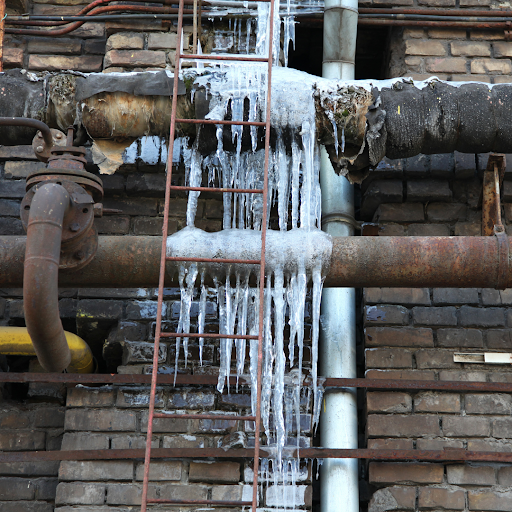How to Safeguard Pipes from Freezing: Specialist Guidance
How to Safeguard Pipes from Freezing: Specialist Guidance
Blog Article
Nearly everybody has their own thinking involving How to prepare your home plumbing for winter weather.

Cold weather can wreak havoc on your pipes, especially by freezing pipelines. Right here's just how to avoid it from occurring and what to do if it does.
Introduction
As temperature levels drop, the risk of frozen pipelines increases, potentially causing costly repair services and water damages. Comprehending just how to prevent icy pipelines is important for home owners in cold climates.
Recognizing Icy Pipelines
What causes pipes to freeze?
Pipelines ice up when revealed to temperatures below 32 ° F (0 ° C) for extended periods. As water inside the pipes freezes, it expands, putting pressure on the pipe walls and potentially causing them to burst.
Risks and damages
Frozen pipelines can lead to water disturbances, home damage, and expensive fixings. Burst pipes can flood homes and trigger considerable architectural damages.
Indications of Frozen Pipeline
Determining frozen pipelines early can avoid them from bursting.
Just how to determine frozen pipes
Seek decreased water flow from taps, uncommon smells or noises from pipelines, and visible frost on subjected pipes.
Avoidance Tips
Insulating at risk pipelines
Wrap pipelines in insulation sleeves or make use of heat tape to secure them from freezing temperature levels. Concentrate on pipelines in unheated or exterior areas of the home.
Home heating strategies
Keep interior areas properly heated up, specifically areas with pipes. Open up closet doors to permit cozy air to circulate around pipes under sinks.
Safeguarding Outdoor Plumbing
Garden hoses and outdoor faucets
Separate and drain pipes yard pipes prior to wintertime. Set up frost-proof spigots or cover exterior taps with shielded caps.
What to Do If Your Pipelines Freeze
Immediate actions to take
If you suspect icy pipelines, keep taps available to ease pressure as the ice thaws. Utilize a hairdryer or towels soaked in warm water to thaw pipes gradually.
Long-Term Solutions
Structural changes
Think about rerouting pipelines away from outside walls or unheated locations. Add additional insulation to attics, basements, and crawl spaces.
Updating insulation
Invest in high-grade insulation for pipes, attic rooms, and wall surfaces. Proper insulation assists keep consistent temperatures and lowers the risk of frozen pipes.
Verdict
Preventing icy pipes calls for aggressive steps and fast reactions. By recognizing the causes, signs, and safety nets, home owners can shield their pipes during cold weather.
5 Ways to Prevent Frozen Pipes
Drain Outdoor Faucets and Disconnect Hoses
First, close the shut-off valve that controls the flow of water in the pipe to your outdoor faucet. Then, head outside to disconnect and drain your hose and open the outdoor faucet to allow the water to completely drain out of the line. Turn off the faucet when done. Finally, head back to the shut-off valve and drain the remaining water inside the pipe into a bucket or container. Additionally, if you have a home irrigation system, you should consider hiring an expert to clear the system of water each year.
Insulate Pipes
One of the best and most cost-effective methods for preventing frozen water pipes is to wrap your pipes with insulation. This is especially important for areas in your home that aren’t exposed to heat, such as an attic. We suggest using foam sleeves, which can typically be found at your local hardware store.
Keep Heat Running at 65
Your pipes are located inside your walls, and the temperature there is much colder than the rest of the house. To prevent your pipes from freezing, The Insurance Information Institute suggests that you keep your home heated to at least 65 degrees, even when traveling. You may want to invest in smart devices that can keep an eye on the temperature in your home while you’re away.
Leave Water Dripping
Moving water — even a small trickle — can prevent ice from forming inside your pipes. When freezing temps are imminent, start a drip of water from all faucets that serve exposed pipes. Leaving a few faucets running will also help relieve pressure inside the pipes and help prevent a rupture if the water inside freezes.
Open Cupboard Doors
Warm your kitchen and bathroom pipes by opening cupboards and vanities. You should also leave your interior doors ajar to help warm air circulate evenly throughout your home.

I was guided to that write-up about 6 Ways to Prevent Frozen Pipes through an acquaintance on a different web page. Are you aware of somebody who is fascinated with the topic? Please feel free to share it. I love reading our article about Helpful Tips to Prevent Frozen Pipes this Winter.
Book Services Report this page